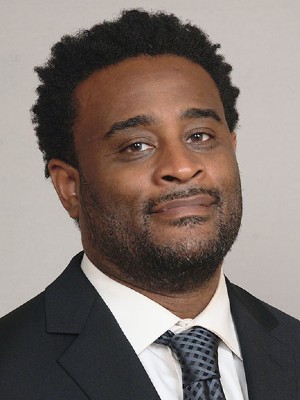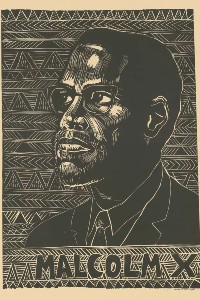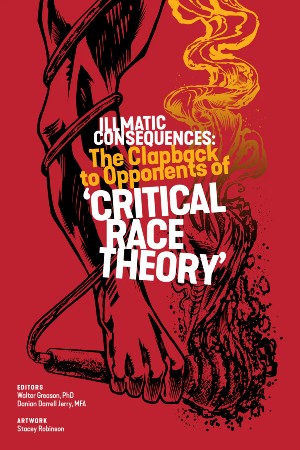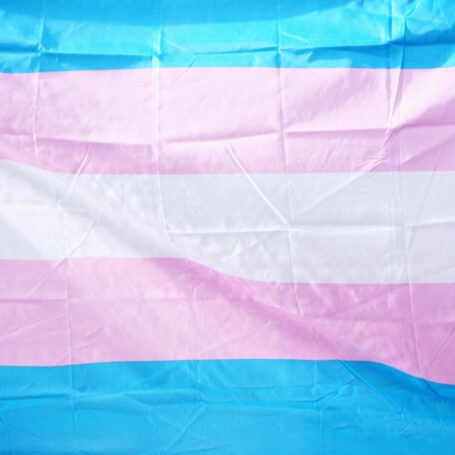‘People Are Going to Seek the Things That Are Kept From Them’: An Interview with Danian Darrell Jerry
Danian Darrell Jerry is the co-editor, with Walter Greason, of a just-released book, Illmatic Consequences: The Clapback to Opponents of ‘Critical Race Theory’. The book uses 1994 hip-hop masterpiece Illmatic, the debut of New York rapper Nas, as a vehicle to explore — and hopefully retard — race-based social injustice in the United States. Across 33 essays and ‘interludes’ from social scientists, artists and activists, the edited volume harnesses that power of hip-hop in service to this social accounting.
Social Science Space talked with Jerry about his life and how it impacted Illmatic Consequences.
Jerry holds a master of fine arts in creative writing from the University of Memphis and was a 2020 fellow of the Voices of Our Nations Arts Foundation. He is a fiction editor of Obsidian: Literature and Arts in the African Diaspora, and founded Neighborhood Heroes, a youth arts program that employs comic books and literary arts.

Who is Danian? Tell me who you are that doesn’t appear on your CV.
Danian is a writer-editor. A musician. An MFA graduate. A Black speculative artist. And I’m a native Memphian.
And Danian is a person who … it’s funny because the whole idea of a ‘Critical Race Theory’ was foreign to me because I had never really heard of it. But then after I did hear of it and I studied and learned about it, what I found was that my interaction with critical race theory, I believe, came long before I knew about it, because there’s an aspect of critical race theory that talks about unequal distribution of the law.
And I feel as though growing up in an impoverished community in Memphis that I definitely came into contact with that on a daily basis.
So you’re saying critical race theory — as an entity — existed before Kimberlé Crenshaw, or anyone, put a name to it?
Definitely. Kimberlé Crenshaw put a name to what they were doing in court. Battling on these civil rights cases, finding that even though the Civil Rights Act had been passed, corporations and government entities were slow in following along with these statutes.
But from my perspective growing up, I would say from the time when I was maybe 13 or 14, all the way up until I was at least about 19 or 20. I lived in the area called South Memphis, Castalia Heights. I can say that the police pretty much terrorized my neighborhood. As a child, 13, 14 years old, I was harassed by the police daily. I’ve been searched. I’ve had flashlights shined down my underwear, questioned, hijacked, all sorts of things. I was an adult before I realized that we were kids, you know? It was a form of bullying.
As a kid, I lived in an impoverished community but I wasn’t a drug dealer or a criminal. But I remember a police officer saying — because someone asked him – ‘Why are you always pulling this group of young men over? Why are you always harassing them when you pretty much know who the drug dealers are in the neighborhood and who the dealers are not?’ And I remember that police officer saying that ‘When I see a group of you’ — and as in ‘you,’ he meant young black men or young black people – ‘when I see a group of you, there’s a 50-50 chance that you’re breaking the law. So I just pull you over and see.’
That’s like my first interaction with critical race theory, or the idea that the law, and my existence as a Black person or an African American, are linked. And my interaction with the law shapes my ideas of who I am as a Black man, as a young Black person.
How did that experience, and then all your other experiences, lead you to your academic career?
I was an adjunct at the University of Memphis, but right now I’m teaching middle school. And I’m also a tutor. I help kids who are going through Memphis City Schools who are in school and who are having trouble. I would say as far as my experiences and how those experiences led me to an academic career: I would say they gave you things to write about.
I have a story that I published in The Magazine of Fantasy and Science Fiction. It’s called “Dante’s Bones,” and it’s about a young group of kids who live in the South Memphis community, and they’re around all kinds of things that children should not be around. But in my story, there’s a science fiction-based explanation for it. I think that what goes on in impoverished communities is so alien to people who are not around it that it almost sounds like science fiction or fantasy.

It’s funny because that ties into my experience as a hip-hop artist. When I was a kid, I remember a Run DMC song, “Proud to be Black,” and that’s the first time I heard Malcolm X’s name mentioned. This ties into critical race theory as well, the idea of African American history being erased from school. I was in the eighth grade. I had never heard of Malcolm X before. Never. And I don’t think even after I had heard of him, and started reading about him myself, I’ve ever heard one teacher mention Malcolm X.
At first, I thought Malcolm X was a DJ because they were rappers talking about him, and the name Malcolm X sounds kind of like a rapper. I asked my mom who he was, she said he was a militant. I didn’t know what that was. I did some research and it led me to The Autobiography of Malcolm X. I read that in middle school.
One of the main things for me was that I had never heard of Malcolm X, and that made me believe the things that he was saying in that book. It makes sense about African Americans, about Black people, about our history and our contributions to this country sort of being erased — which ties into the argument in our book, Illmatic Consequences.
A lot of it is about this disinformation campaign, the misappropriation of the term critical race theory, this red herring, this straw man argument, right, that claims critical race theory to be one thing when it’s not.
And when I first started hearing these arguments, especially the arguments of dealing with problematic parts of history, these portions of history making students uncomfortable, I couldn’t help but think about the discomfort I felt in school from looking at the history book and not seeing anything about my people. I’m literally looking at the history book and going from slavery to little something about Martin Luther King, and that’s it, right?
How did you come to the Illmatic book project?
I came to the project through the editorial director, Dr. Reynaldo Anderson. I’m a supporter of the Black speculative arts movement. I’m a supporter of Afrofuturism 2.0, so I had studied Dr. Anderson’s work. He suggested me as a person to come in and sort of put an editorial eye on the storytelling aspect. [Co-editor] Walter Greason is an academic first, so I’m coming in and editing it from a sentence level up using my creative writing skills.

What was your decision-making process on structuring the book the way that it is?
The book is titled Illmatic Consequences: The Clap Back to Opponents of Critical Race Theory. So not only does it appeal to adherents of critical race theory, it also is directed towards fans of hip-hop culture. People who grew up with hip-hop and who are older now, like my age [50]. So we took an album, Nas’s, Illmatic, and we decided to use that album as a lens to narrow our arguments and to engage critical race theory. We looked at Illmatic as an example of hip-hop telling the stories of black people’s trauma in America.
Coming at you from that aspect, we wanted it to not only be able to communicate or engage in discourse with academics, we wanted to be able to engage with people who are fans of hip-hop.
More importantly to me, I wanted to come up with a project that would appeal to students on a college level. I wanted to edit the book that a student would keep at the end of the semester, and not give it back, right?
You were talking about how the first time you heard Malcolm X was in Run DMC song. I’m interested in using Nas in particular as opposed to Run DMC or another act. Can you walk me through that little bit?
Well, there’s a couple of things. Nas’s album Illmatic was released in 1994 and what that album does for me is it provides a lens into the lives that everyday lives of Black people living in impoverished communities. It’s one of the things that I loved about the album from the day it came out; I felt as though he was talking about the things that were going on.
Even though I wasn’t from New York at that time, I had never been there, I had never seen a subway train or the high-rise projects like Queens Bridge, but I understood everything that he was talking about. I understood the idea of police brutality in my neighborhood. I understood the idea of growing up around a community that seems to be torn open by crime, torn open by poverty, by drug use and not even knowing where these things come from, not even knowing why they exist or why you’re there. But you have to deal with it still, you know? So that’s one of the things that made me want to use this album in this book.
There’s also the idea of storytelling, the use of the everyday narrative to investigate history and as a sociological lens. And I feel this album does that really, really, well. This is one of the first albums, in my opinion, that did that. They really took a close look at what the everyday person was going through and how they how they dealt with life, how they manage to just make it from day-to-day.
Also, there’s this idea of the way the album was put together. At that time, Nas comes with Illmatic, it’s sort of like you have like all the hip-hop cultures, especially in New York, uniting in order to bring this album to life, to help present it and to promote it. It’s one of the first albums that has a team of different producers, not just one person or one camp. There were producers like DJ Premier, Q-Tip, Large Professor, Pete Rock, L.E.S. People from all different walks of life coming together to make sure that this project was as great as it could be.
That’s what I wanted to do. I wanted to pull together scholars, community activists, teachers from every academic level, from the tenured professor down to the high school teacher who is battling to protect their classroom environment and the integrity of it, to pull all these people together to talk about this disinformation campaign, this misappropriation of this term ‘critical race theory’ that is being used to get rid of the little bit of Black history that is in school.
I find it really interesting how you’re comparing Nas’s use of all those producers to kind of an edited volume with all the all the different voices coming in, but still on that on that same theme. Anyway, how does somebody use the book?
I think that you can use the book to educate yourself and learn what critical race theory actually is, and what it is not. You can use the book to demystify this false narrative, this false argument that is being perpetuated by people like Ron DeSantis.
You have politicians using this false argument in order to gain political office, in order to pass legislation that censors not only Black history but also censors equity in the workplace. So our book will help the students to recognize these false arguments, to recognize the instances of racism that pop up in places where they aren’t necessarily expecting it, like in social media.
Is it is it the responsibility of arts to get these messages across?
I don’t think is the responsibility of the arts to get the messages across, but I think the messages come across through the arts regardless. When you have a piece of art, whether it’s literature or a painting, and they project messages that are bigger than the story itself, that’s the highest level of art.
And is it a kind of an end run — you theoretically can’t outlaw music or comic books or graphic novels or movies?
You can’t outlaw people’s hearts. People are gonna seek truth regardless. And maybe truth is not the right word. Because, you know, truth is subjective, right? But people are going to seek the good or what is good for them. People are going to seek the things that are kept from them, especially when it comes to history, especially when it comes to their own lives.

























































































